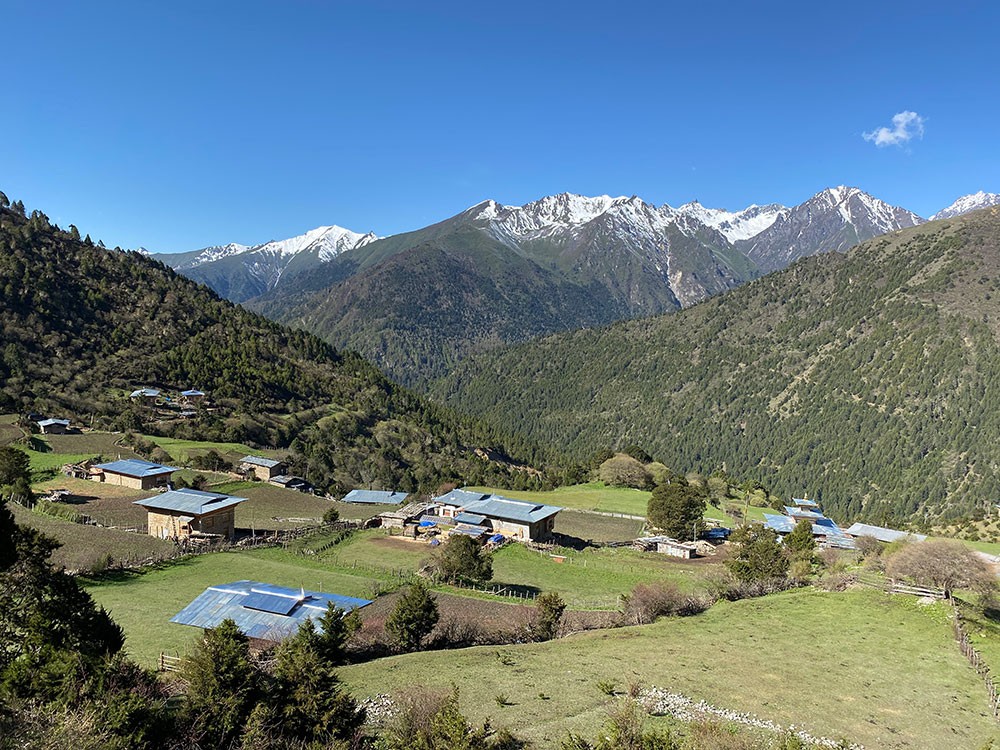Choki Wangmo | Gasa
Just two decades ago, the consumption of green leafy vegetables was a rare occurrence for Rinchen Gyeltshen and his family of eight. Even the village elites did not have the luxury of such nutritious fare. The harsh highland climate, reaching heights of up to 4,000 metres above sea level, made it nearly impossible to grow leafy greens. Instead, the 62-year-old and his wife relied solely on a dairy-based diet, occasionally incorporating turnip, potato, and radish into their meals of wheat and barley flours.
However, in a remarkable turn of events, the winds of change have swept through this remote region, and today, all 286 households in Laya gewog proudly boast greenhouses brimming with verdant leafy vegetables year-round. Lungo’s local astrologer, renowned for his mystical predictions, now indulges in spinach with every meal, reveling in the vegetable’s rich, slightly sweet, and tender flavor, skillfully prepared by his wife over the wood-burning stove.
The catalyst for this agricultural revolution can be traced back to 2011 when the gewog agriculture sector introduced a comprehensive programme that provided free materials for constructing poly houses, distributed vegetable seeds, and offered training on vegetable management and operational techniques. This initiative marked a significant turning point, spurring the area’s agricultural development and breathing new life into the mountains.
As a result, vegetable production in the region has soared from 16 metric tonnes (MT) in 2017 to an impressive 20MT in 2022. Today, Laya has emerged as a leading exporter of vegetables, with a focus on shipments of broccoli and cauliflower to Singapore.
Recently, the introduction of the sunken bed method in Lungo has further expanded the possibilities for vegetable cultivation. Pem Zam, a farmer, eagerly anticipates trying out this innovative technique on her land. With determination, she delves more than a meter deep into the soil, creating a three-meter-wide bed, aiming to enjoy a year-round supply of fresh green vegetables from her farm.
Inspired by the success stories shared by her friends and relatives in Laya, Pem Zam’s excitement is palpable. Reports suggest that they can harvest approximately 40 bundles of spinach even during the harshest winter months, attesting to the indispensability of the sunken bed method in her own endeavours.
While Pem Zam currently cultivates leafy vegetables in her greenhouse from May to September, crops such as chilli and cucumber require a full year to mature. Consequently, she used to rely on dried chilies imported from Paro during the winter season.
Tsheltrim Dorji, the senior agriculture extension supervisor in Laya, believes that increased technical support and the local population’s growing exposure to farming practices have played instrumental roles in boosting agricultural production.
Local residents have observed a favourable shift in climate conditions over the years, making agriculture more viable in their mountainous region. This has allowed them to diversify their crops and grow lowland produce like coriander, broccoli, and cauliflower.
Studies say that climate change can significantly impact food systems in mountainous regions. Diminished snow cover and shifting precipitation patterns affect subsistence agriculture, sometimes enabling the cultivation of crops previously unimaginable in high-altitude areas, thereby broadening the range of locally available food.
However, farmers whose livelihoods primarily depend on cordyceps, a highly valued fungus, lament the challenges posed by pests such as large white butterflies in cauliflower, as well as aphids in spinach and chilli. These infestations have intensified due to the warming temperatures, compelling farmers to use pesticides and posing a threat to Gasa’s organic brand.
In response to escalating conflicts with wildlife, sustainable measures are becoming increasingly necessary. During a recent session in the Parliament, the MP for Khatoed-Laya, Tenzin, urged the Ministry of Agriculture and Livestock to allocate resources for the provision of chain-link fences in the next fiscal year.
As the snowline recedes at an alarming rate, the resilient inhabitants of Laya envision a future where crops and vegetables can be cultivated at heights of up to 5,000 metres above sea level within the next decade or two. This unwavering spirit and determination drive their quest for self-sufficiency and sustainable agricultural practices in the face of an evolving climate.


